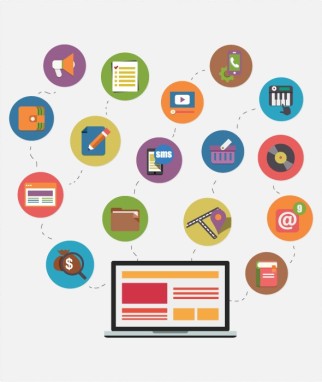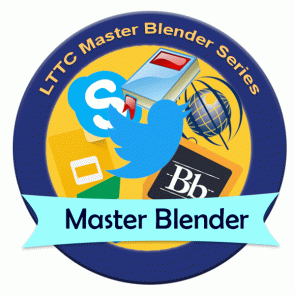Digital badging, or microcredentials, have been gaining traction over recent years as a valuable tool for publicly recognising and accrediting skills, achievements or knowledge. Keen to explore the potential of badging for accreditation, and in particular for supporting and recognising academic development, last year at the LTTC we initiated the design and implementation of a digital badging framework to support our professional development offerings. This means that DIT staff can potentially earn a digital badge by engaging with various LTTC workshops and completing associated activities. The recipient can then choose to publish their badges on their personal websites, LinkedIN profiles, eportfolios etc.
digital badge by engaging with various LTTC workshops and completing associated activities. The recipient can then choose to publish their badges on their personal websites, LinkedIN profiles, eportfolios etc.
Over the next couple of posts I’m going to provide an overview of this initiative, how we designed and implemented it, what worked and what didn’t. Before I go into the details however, let’s look at the bigger picture, starting off with….”what is a digital badge”?
What is a digital badge?
A digital badge is a validated representation of a skill, achievement earned or knowledge gained. Digital badges can be displayed or shared online via a range of platforms including virtual learning environments, blogs, eportfolios and social media sites such as LinkedIn. Thus digital badges can be used by learners to provide evidence of learning and achievement to potential employers, organisations and other parties.
Recognised as a key digital trend in higher education in recent years (see for example, the NMC Technology Outlook for Higher Education: Ireland and Australian Tertiary Editions (2015), digital badges continue to be used by higher education institutions, learning and development organisation and platforms interested in exploring their potential.
(It is interesting to note however, that the Gartner Hype Cycle for Education 2017 has placed microcredentials on their “trough of disillusionment” – a labelling usually reserved for those tools in which interest is waning generally because they have failed to fulfill hype around their usage. Thoughts anyone?)
Digital badging in higher education: the current scenario
Digital badges are commonly used to recognise learning that occurs both inside and outside the classroom. For students, they can be used within academic programmes or modules where they may be used to recognise the development of a specific skill or they may be used as a type of “microcredit” within modules where they can motivate and engage learners as they progress through various activities. Outside the classroom, digital badges are also increasingly used to recognised skills developed via extra-curricular activities including peer mentoring, volunteering and participation in societies.
In an academic development context, digital badges offer a way of officially validating and acknowledging the skills and competences that academics develop through their engagement with professional development activities (many of which are non-accredited). In recognition of this, the National forum for the Enhancement of Teaching and Learning has developed a National Digital Badge System for the HE sector. Developed against nationally agreed criteria, these digital badges are awarded to HE professionals for the development of particular teaching and learning skills and competences. (Note: these digital badges do not include the awarding of ECTs.)
They are a fantastic resource for anyone interested in upskilling and/or facilitating one of the nationally recognised digital badge programmes within their own institution. Each digital badge comes with a comprehensive set of open access programme resources enabling “facilitators” to host the programme within their own institution. To become a “badge facilitator” you need to complete a facilitator development workshop and then register as a facilitator. Having completed three of these facilitator workshops (“Programme Focussed Assessment”, “Programme Design” and “Universal Design in Teaching and Learning”) I can definitely recommend them. Full details are available here.
Other examples of digital badging initiatives for academic development
- Another national project which is currently exploring the potential of digital badges in association with a National Digital Skills Framework. – See http://allaboardhe.org/digital-badges/.
- The UK’s Open University have implemented digital badges in conjunction with their open courses (http://www.open.edu/openlearn/get-started/badges-come-openlearn).
- The Centre for Excellence in Teaching and Learning in Texas Wesleyan University (USA) awards badges for participation in academic development programs to recognise soft and technical skill development (http://txwescetl.com/badges-2-0/).
- University College Cork have piloted the use of digital badges in conjunction with their “TEL Tasters” sessions for staff: participants are awarded badges in recognition of the skills they develop in the application of TEL to presenting, collaboration, video and internet (http://instructionaldesign.ucc.ie/tel-tasters/).
Digital badging for “Master Blenders”
In 2017, we decided to grasp the nettle and pilot a digital badging initiative in conjunction with a new “Master Blender” professional development series for academic staff. Over the next few posts I’m going to look back on this initiative, describe the rationale and design framework for the “Master Blender” series and outline the practical steps involved in implementing the digital badging functionality. Keep an eye out for the next posts!

You must be logged in to post a comment.